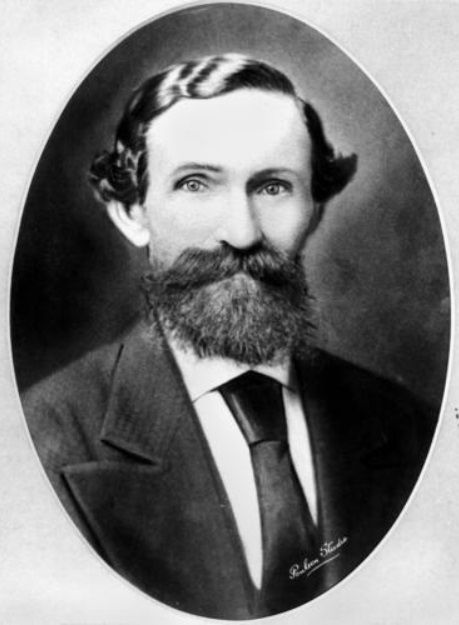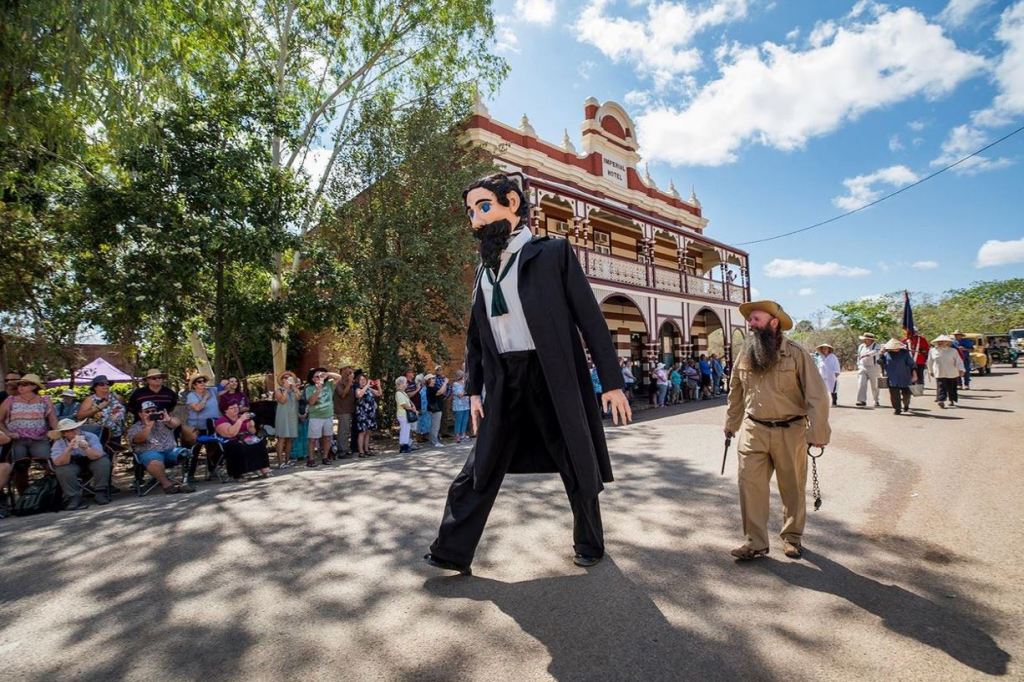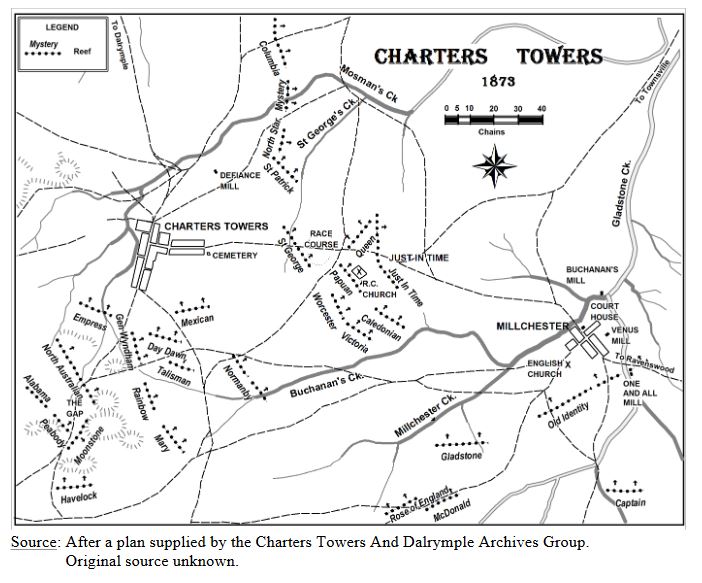150 years ago today, the Macrossan Queensland dynasty was established in Charters Towers. On 25 November 1873, John Murtagh Macrossan was first elected as the Member for Kennedy. He was to continue as the Member for Kennedy until 1878, and then as Member for Townsville from 1879 to 1891.
John Murtagh Macrossan was born in Creeslough, County Donegal in Ireland in about 1832. At 16 years of age, he was sent to study in Glasgow, but the adventurous Macrossan found himself on the Victorian goldfields by the time he was 21.

After pursuing a mining career in Victoria, NSW and New Zealand, Macrossan took on the role of second in charge of John Mackay’s 1860 expedition that explored the area north of Rockhampton to where the city of Mackay now stands.
By the age of 33 Macrossan had moved to the goldfields of north Queensland and by 1871 had become a leading figure and spokesperson for miners’ rights. A fiery personality with a fierce loyalty to his fellow miners, Macrossan organised the Ravenswood Miners’ Protection Association, which petitioned the Minister for the removal of Goldfield Commissioner T.R. Hackett. In the same year, Macrossan himself was fined for publicly horsewhipping Hackett for alleged defamatory comments. Macrossan’s popularity increased because of this incident.

In 1872, Macrossan divided his time between Ravenswood and the new goldfield of Charters Towers. In June 1872 he chaired a meeting called to form a Miner’s Protection Association at Charters Towers. Macrossan’s political base in Charters Towers was the large Irish population of Millchester township, many of whom had moved over from Ravenswood.

At a public meeting in February 1873, John Murtagh Macrossan encouraged Charters Towers miners to register on the Electoral Roll. The recently enacted Electoral Redistribution Act of 1872 would then entitle them to return a representative to the Queensland Legislative Assembly. Macrossan did not suggest at any point that he would be a candidate, but the thrust of his discourse was that a local representative would give the diggers the representation they deserved, and that theirs would be the dominant voice in the North Kennedy.
On 19 July 1873, Macrossan gave the Millchester township its newspaper, when he published the first issue of The Northern Advocate and Miners’ Journal. Possession of a newspaper in his electorate gave to Macrossan an invaluable platform, and to the predominantly Irish township a vehicle to express its rivalry with Upper Camp township.
For the next few years Thadeus O’Kane, editor of the Northern Miner and John Murtagh Macrossan, through their journals, were to fight the battle of their rival townships to a finish. In the process they made the uninhibited journalism of the Charters Towers goldfield a byword throughout the Australian colonies.
Some mystery surrounds the source of John Murtagh Macrossan’s income, but he must have had some substance to remain an unpaid member of parliament for twelve years. He certainly controlled the Northern Advocate and Miners’ Journal for some time and was rumoured to have other newspaper interests in the north. He also appears to have invested in lead mining and was involved in railway construction contracts in New South Wales and perhaps in Queensland.
Macrossan was an unshakeable representative of miners and north Queensland. In debates in the Queensland Parliament, he advanced the causes of north Queensland. He argued for a continuing cheap supply of South Pacific Islander labour for sugar planters, as long as their work was confined to the plantations, and for a tax to be removed from mining machinery. In 1886, he made an impassioned speech in favour of north Queensland’s separation from the rest of Queensland, because he did not believe the north was receiving its due in government expenditure.
Macrossan was physically small and slight, pale-complexioned and almost delicate in appearance. His deep-set eyes and heavy beard, jet black in his earlier years, attracted attention and hinted at a depth of feeling and a strength of expression to which his contemporaries all attest.
Solitary by nature, he was known to miners as ‘Jack the Hatter’ and he seems not to have made friends easily. This difficulty must have been enhanced by his intense vigour in party politics, the bitterness and passion of the speeches in and outside the House, the strength of his insistence on his Catholic religion and a clear determination not to conciliate or to suffer fools gladly.
Macrossan was seen as a champion of the worker and his support for north Queensland separation and for the mining and sugar can industries never wavered. However, Macrossan lost the seat of Kennedy at the 1878 general election, but won the seat of Townsville at a by-election on 4 March 1879 when a loyal supporter resigned in his favour.
Prior to his re-election, John Murtagh Macrossan was appointed Secretary for Public Works and Mines in January 1879. He resigned from the portfolio in 1883 because of the possibility of a conflict of interest over a railway construction project in NSW, but regained it in 1888. In 1890 he was for a short time Colonial Secretary and Secretary for Mines.
John Murtagh Macrossan possessed a magnetic personality. Though he was of frail physique he was full of energy, and his speeches exercised a remarkable power over his hearers. His language, like his mind, was simple and direct.
In February 1890, John Murtagh Macrossan and Sir Samuel Griffith attended the conference on Federation called by Sir Henry Parkes in Melbourne. Although the government resigned in August 1890, Macrossan was chosen to accompany his long-time parliamentary adversary Griffith to the Australasian National Convention at Sydney in 1891.
Macrossan’s health deteriorated seriously, but he was able to contribute two substantial speeches to the 1891 convention. He pursued the separation issue when he argued that some of the colonies were too large for good government.
“I believe also that power should be given to the Federal Parliament … to cut up, if thought necessary, the different existing colonies into smaller states … Some of the existing colonies, such as Queensland, South Australia and Western Australia, are far too large for good government.”
The effort proved too much. Macrossan had been suffering from heart disease for some years but he had an attack of bronchitis in Sydney and died during the convention on 30 March 1891. He was buried in Nudgee Cemetery, Brisbane.
John Murtagh Macrossan was survived by his wife Bridget, née Queely, whom he had married at St Joseph’s Church, Townsville, on 1 October 1874, and by a daughter and five of their seven sons. Two of his sons, Hugh Denis Macrossan (who also represented the Windsor electorate) and Neal Macrossan, along with his grandson, John Murtagh Macrossan, became Chief Justices of Queensland, while other descendants have been prominent in the law. For a person who often expressed contempt for persons who lived on the law, John Murtagh Macrossan spawned an amazing legal legacy.

On 7 August 1925, the Macrossan family donated £2000 to The University of Queensland, under a deed of trust, to fund an annual lecture on subjects of public interest. It was the first lectureship of its kind established in Queensland. In March 1928, the first John Murtagh Macrossan Memorial Lecturers were announced by the UQ Senate. From 1928 to 1993, Macrossan Lectures were given almost every year by distinguished Australians on a broad range of topics of public interest.
In 2023, a new annual Macrossan public lecture series was established by The TC Beirne School of Law and the UQ Law Association to be delivered in the Banco Court of the Supreme Court of Queensland to celebrate the commencement of each academic year.
